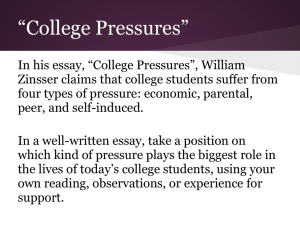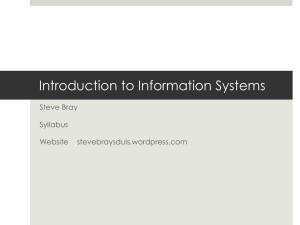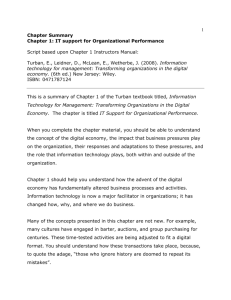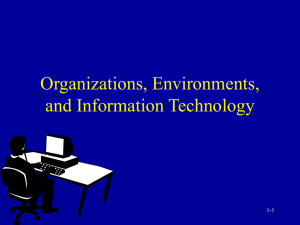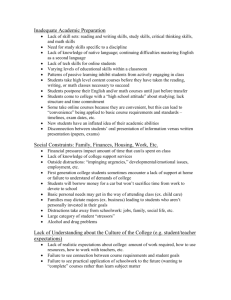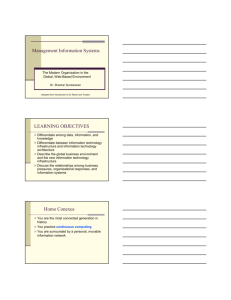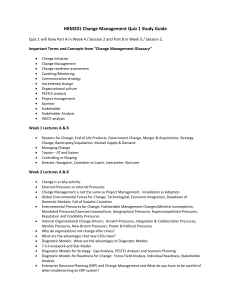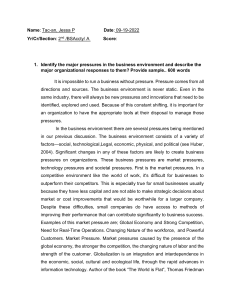Free Power Point Presentation Template
advertisement
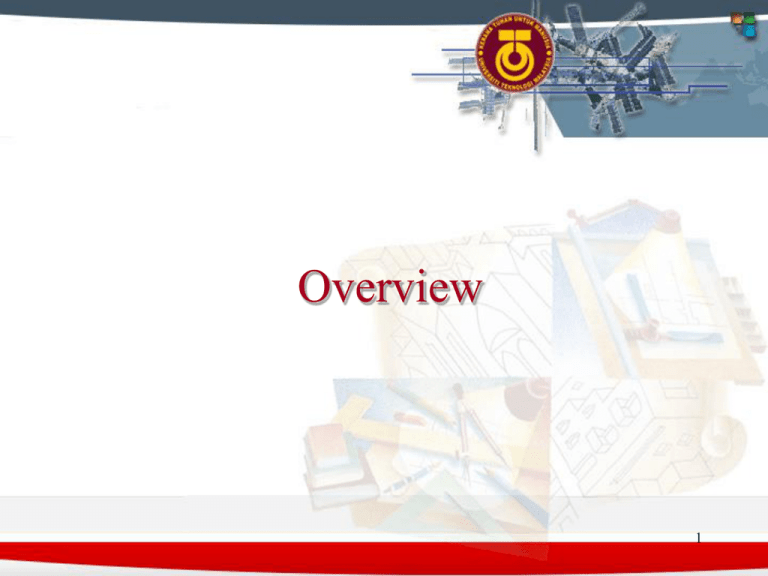
Overview 1 Changing Business Environment • Companies are moving aggressively to computerized support of their operations => Business Intelligence • Business Pressures–Responses–Support Model – Business pressures result of today's competitive business climate – Responses to counter the pressures – Support to better facilitate the process 2 Business Pressures–Responses– Support Model 3 The Business Environment • The environment in which organizations operate today is becoming more and more complex, creating: – opportunities, and – problems – Example: globalization • Business environment factors: – markets, consumer demands, technology, and societal… 4 Business Environment Factors FACTOR Markets Consumer demand Technology Societal DESCRIPTION Strong competition Expanding global markets Blooming electronic markets on the Internet Innovative marketing methods Opportunities for outsourcing with IT support Need for real-time, on-demand transactions Desire for customization Desire for quality, diversity of products, and speed of delivery Customers getting powerful and less loyal More innovations, new products, and new services Increasing obsolescence rate Increasing information overload Social networking, Web 2.0 and beyond Growing government regulations and deregulation Workforce more diversified, older, and composed of more women Prime concerns of homeland security and terrorist attacks Necessity of Sarbanes-Oxley Act and other reporting-related legislation Increasing social responsibility of companies Greater emphasis on sustainability 5 Organizational Responses • Be Reactive, Anticipative, Adaptive, and Proactive • Managers may take actions, such as – – – – – – – Employ strategic planning Use new and innovative business models Restructure business processes Participate in business alliances Improve corporate information systems Improve partnership relationships Encourage innovation and creativity 6 Organizational Responses – Improve customer service and relationships – Move to electronic commerce (e-commerce) – Move to make-to-order production and on-demand manufacturing and services – Use new IT to improve communication, data access (discovery of information), and collaboration – Respond quickly to competitors' actions (e.g., in pricing, promotions, new products and services) – Automate many tasks of white-collar employees – Automate certain decision processes – Improve decision making by employing analytics 7 Closing the Strategy Gap • One of the major objectives of computerized decision support is to facilitate closing the gap between the current performance of an organization and its desired performance, as expressed in its mission, objectives, and goals, and the strategy to achieve them 8 Thank you Reference: Efraim Turban, Ramesh Sharda, Dursun Delen, 2011. Decision Support and Business Intelligence Systems. 9th edition. Prentice Hall 9
